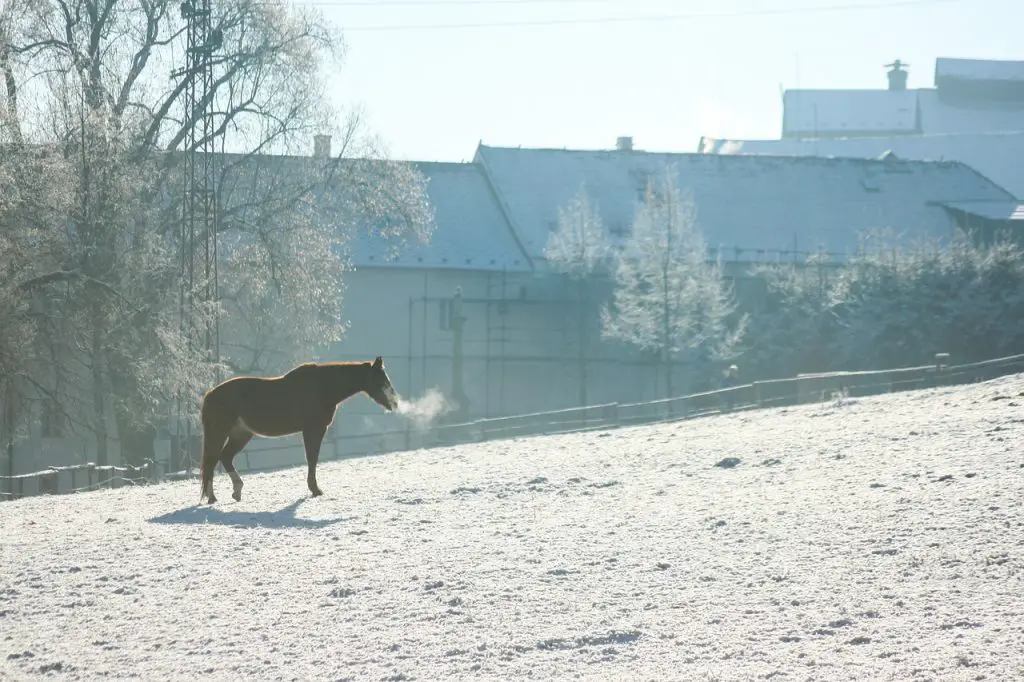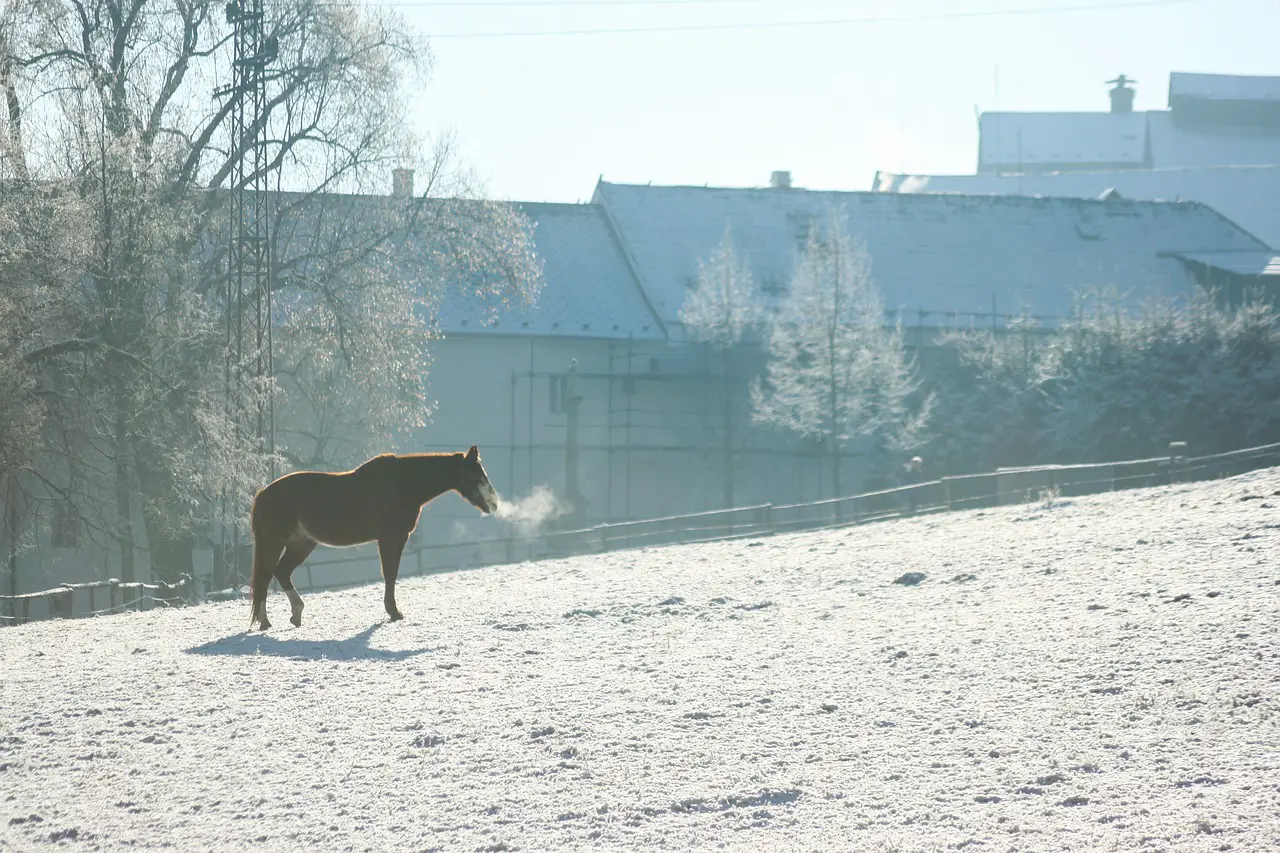Last Updated on February 19, 2022 by Allison Price
Horses can be infected by Equine Influenza or other respiratory viruses (rhinopneumonitis or rhino virus) at any time of the year. Horses who are exposed to other horses or those that live in large boarding facilities are at greater risk. Although not all horses infected with a virus will show obvious signs of illness, it is possible for a horse to transmit the infection to others, such as a young horse or an older horse. A horse who has never left the property may become infected.
Other than viral and bacterial infections, equine airways can also be affected by heaves (also known as recurrent or inflammatory airway obstruction (RAO) or inflammatory lung disease (IAD). Heaves is a condition in which a horse exhibits specific clinical signs. These include a cough (productive, wet or unproductive cough), exercise intolerance and flared nostrils.
Inhaled antigens, such as dust from bedding and feed, can cause heaves. Heaves can cause spasm, obstruction of the airways by mucus, and chronic changes in the terminal branches. This chronic disease is caused by moldy hay, as well as damage from respiratory viruses. Lung inflammation can be caused by endotoxins from urine and manure.
The other airway problem, IAD (irritability to exercise), also negatively affects tolerance, but the horse does not experience obstruction of the airways or make too much effort to breathe like heaves. A horse with IAD is normally healthy at rest. However, they may have occasional coughs. Mucus builds up in the trachea, rather than the lower lungs. Increased inflammatory cells can be identified with tracheal aspirates and broncho-alveolar/lung washes.
Although prevention is generally the best way to maintain good airway health in horses, even the best circumstances can lead to respiratory infections. How can you tell if your horse is suffering from a respiratory infection?

Clinical Signs
If your horse is unable to move, has a discharge from his nose or eyes, or starts coughing, there are a few things you can do to help locate the cause. To check for fever, take a temperature of the rectal. Next, take a look at the hay being fed. Is it new or has it been used previously? To check for dust, shake out a few flakes. Is it smelling musty, as one would expect from mold? Consider the barn environment. Are there ammonia fumes from urine-soaked bedding? Is there an arena for horses to ride in?
All of these conditions can lead to an inflammation of the respiratory tract. A compromised lung quality can make the respiratory tract more vulnerable to viral attack. Is your horse suffering from nasal discharge? What is it like? Clear, watery discharges are normal. However, they could indicate a horse suffering from a viral infection. A clear, white-colored discharge can indicate mucus. This could be a sign of an allergy or inflammation in the airways. A nasal discharge that is yellow, creamy, or green indicates a bacterial infection.
If you feel the horse’s jaw, check for swelling. Monitor his temperature, take his blood pressure, water and feed him separately. Also, look out for signs of nasal discharge or cough. Infected lymph nodes with Streptococcal organisms can cause a “strangles”, which is highly contagious to horses. Each case is unique and requires a different treatment plan. Your vet will be able to advise you.
Isolation
To prevent the spread of a viral infection or bacterial infection throughout the herd, a horse that is coughing should be kept away from other horses. Generally, horses are incubated for respiratory viral infections between 3-7 days after being exposed before clinical signs start to appear. Clinical signs can take up three weeks for Streptococcus Equi to develop. Horses with a respiratory infection need to be allowed to heal for at least three weeks before they can return to full work. This allows the horse’s airways to heal completely without relapse.
Clean Air Strategies
It is essential to provide clean air for horses with respiratory issues. This is a great strategy to maintain good airway health. If your horse is indoors, it’s better to take him outside and let him breathe fresh air. Instead of feeding your horse with chest-high feeders, hay should be fed directly from the ground. Head-down feeding allows horses to clean dirt from their nostrils and airways, rather than inhaling harmful particulate matter into their bronchioles or lungs. Before you feed the horse, shake open the hayflakes and soak them in water. This helps to reduce the amount of dust and spores which could otherwise cause irritation to the airways. A commercial hay steamer is another effective way to “clean” hay. It can remove mold spores and dust.
Prevention Through Immunization Strategies
Your veterinarian will recommend a routine vaccination program to keep your horse’s risk of getting equine flu and equine pneumonia at a minimum. Usually, rhinopneumonitis and influenza vaccines are given twice annually. The vaccination schedule should be more thorough the more horses are involved. In certain cases, an intranasal vaccination for strangles might be recommended in an area where the disease is endemic. Discuss the pros and cons with your veterinarian.



